|
|
 |
|
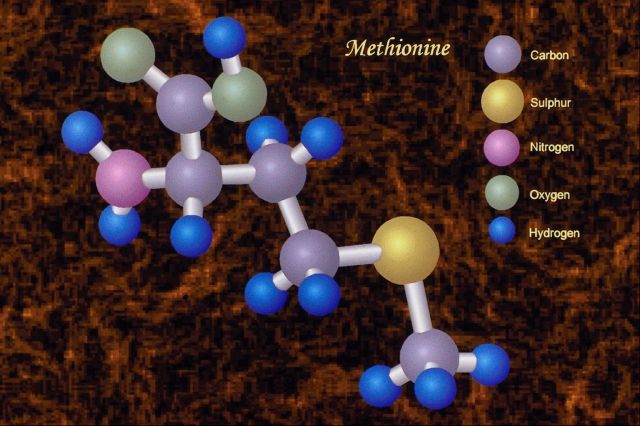

Welcome to our web site!
Science, Technologies, Public Policy and Ethnics:
" To protect the future of discovery. "
This web site is an inclusive forum by which the public, private, academic and scientific sectors in
our society, as well as the world about America comes to a central communications Internet network to focus and
review new science and technologies.
The Goals of this site are:
Support of Free Scientific Inqury, and Open Research:
Proper review of all data to assure accuracy of all information published on this site:
Ethical considerations are also solicited so long as they do not in any manner what so ever
seek to politicalize any field of research, or the innovator and scientist in the process of discovery.
More importantly, science and technology as both a field and profession must be totally responsiable
for the security aspects of every innovation made.
This is assisted, networked and further developed by the following processes.
Public Access: This feature
makes the science more understandable to a larger population segment. Moreover, to inspire others with considerable academic
experiences to formulate a democratic informative focus which assists greater comprehesion by the social, cultural, spiritual
and political leadership about major science and technological issues of today.
Cornell News:
|
|
Email: danishfalcon@aol.com
or Call 607 - 451 - 8663 [ If you have a caller id block, then please leave a voice mail message.]
The Strategic Networking Grids:
|
|
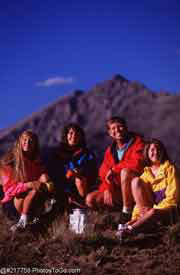
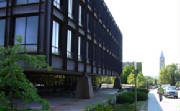
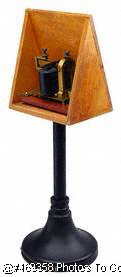
Inter - City Cultural Communications Web Site Program _ The Night Life ( NightLife ),
RMC Internet Network ... the cultural and intellectual sharing of knowledge now becomes
Univsersally accessable-the true crux and heart of " Cultural Democracy ' taking sociocultural form within human behavior.
|

Science and Technologies Ithaca, New York News: Science and Fundemental Human Rights to Full Discovery in how both are interrelated in each discovery
made and the central importance for research to be allowed to follow its path of scientific inqury with out any limitation.
Most strategic are the sites for:
Washington DC Night Life ( NightLife ), RMC. Its purpose is to give accurate scientific and technological details to Congress, as well as gain
attention of the communities within the DC Beltway who are part of the Federal Government,
New York City Night Life ( NightLife ), RMC ~ New York City where both the UN and the New York Stock Exchange exist,
Moscow Night Life ( NightLife ), RMC ~ Moscow to let the Russians know,
Atlanta Night Life ( NightLife (, RMC ~ Atlanta is where the Center for Disease Control is located
Paris Night Life ( NightLife ), RMC ~ Paris, France and French speaking peoples,
Tokyo Night Life ( NightLife ), RMC Tokyo and its industrial and scientific leadership.
Beijing Night Life ( NightLife ), RMC ~ for both Beijing and Mainland China all with the fore thought to gain the attention of both their
regional scientists and political leadership..
Tel Aviv Night Life ( NightLife ), RMC ~ for the various Israeli academia whose research edge is gaining in advance science and the ethical applications
of discoveries.
These cities are extremely strategic and reflects where major science derives its support
underpinnings.
Academia: The is an integrated developing network of academic
sites which are a part of the Night Life ( NightLife ), RMC International Internet Network, and its related cultural democracy
forums and discussion groups. This is ever growing and has attracted attention by the critical use of academic links
to meta tags to informed content which each web site / web page contents.
This network grid covers:
Alexandria, Eygpt [ site ] ~ Athens, Greece [ site ] ~ Atlanta [ site ] ~ Baltimore [ site ] Bierut, Labanon [ site ] ~ Berlin, Germany [ site ] ~ Beijing, Mainland China [ site ] Baghdad, Iraq [ site ] ~ Binghamton [ site ] Buffalo [ site ] - Chicago [ site ] Copenhagen, Denmark [ site ] ~ Cortland [ site ] ~ Elmira [ site ] ~ Gdansk, Poland [ site ] ~ Ithaca [ site ] ~ Los Angeles [ site ] ~ Miami and Miami Beach [ site ] ~ Montreal, Canada [ site ] ~ Nairobi, Kenya [ site ] ~ Nanking, Mainland China [ site ] ~ New York City [ site ] ~ Oslo, Norway [ site ] ~ Paris, France [ site ] - Prague, The Czech Republic [ site ] ~ Rochester [ site ] ~ Rome, Italy [ site ] ~ Tel Aviv, Israel [ site ] ~ Tokyo, Japan [ site ] ~ Toronto, Canada [ site ] ~ Washington DC [ site ]
|

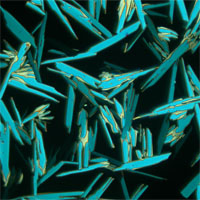
The art of scienceCaptured through
a polarising microscope, this delicate image of liquid crystals is one of dozens that are being exhibited online
by Cambridge University this week to reveal the inner beauty of engineering.
The pictures range from shots of towering wind turbines to rarely-glimpsed
visions of tiny structures growing under laboratory microscopes. All were taken by staff and students at the University's
Department of Engineering as part of an annual photography competition that encourages them to explore the artistic side of
cutting-edge technological research.
Entries can reflect any aspect of the Department's work, whether it takes
place in the lab or in the field, but all try to show aspects of the subject which are beautiful, intriguing, amusing, or
possibly all three.
The winning entry, Blue Spikes (above) was taken by PhD student Sonja Findeisen-Tandel,
and shows liquid crystals in their "mesophase" - the point at which they have ceased to be liquid but have yet to crystallise
fully.
The second prize entry, First Light, was taken by researcher Sam Cox on
the first night of power in the secluded Masai village of Essilanke in Kenya. Sam used the village school for the first trial
of a project to develop a small-scale wind turbine capable of providing electricity to remote regions.
In third prize Ingrid Graz's Moth, by contrast, was taken through an optical
microscope during her research into stretchable electronics. The picture is a close-up shot of the substrate Polymethylsiloxane,
or PDMS. When mixed with a curing agent, this liquid polymer produces a beautiful, butterfly-wing effect invisible to the
naked eye.
The competition is sponsored by Microsoft and judged by senior academics
from within the Department. The entries can be viewed free online by clicking the link to the right of this page.
Ithaca, NY ( Agricultural ) Research Centers: |
|
|
The Ithaca, NY location is the home for three Research Units -- the
Plant, Soil and Nutrition Research Unit and the Biological Integrated Pest Management Research Unit and the Plant-Microbe
Interaction Research Unit-- led by Leon Kochian and Donna Gibson, and David Schneider respectively. In addition, there is a Location Support Unit that provides a comprehensive administrative support program
to these Research Units. The Location Support Unit provides personnel; financial
management and accounting; travel services; procurement, contracting and property services and extramural research agreement
support. The Location has a very active partnering program involving many universities
and other federal agencies. More details about each Research Unit can be found
on their respective web pages. To access these web pages, please use the navigation bar on the left side of this page.
|
|
 |
|
The 4 primary issues to be reviewed:
Science Reviews: The one essential item of what is
being covered and focused is that it must remain accurate, and in keeping with contemporary trends and critical scientific
review. Top people are being contacted to enlist their assistance. Thusly... We are always looking for those
from the academic and private research science community who are interested in becoming critical reviewers of the issues the
title of this site implies.
Forum for Review Avant Garde of Science: http://avantscience.proboards79.com/index.cgi?action=display&board=ed&thread=1164987106
Stem - Cell Research
“Will There be an AQ Khan of Nanotechnology? Anticipating Future Proliferation
Threats in a Globalized World.”
Poliferation of Nuclear Technologies:
|
 |
|
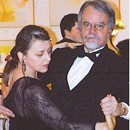
Students / Scholars Bogs, Bloggers, and Journal sites:
All University groups, or individuals listed, or linked are not responsiable
for any comment, or comments written or other wise published in the various forums linked on this site and /or any site linked
to this web site and its sub web pages. The initial comments and research are the solely responsiability by individual
wrtting them and they are further published based upon free scientific inqury, or academic freedoms, and further
rights of freedom of the press and speach as protected by both the United States Constitution, and the full Charter of The
United Nations
Additional Circulation Links:
[*] The selected cities
of Moscow, Russia are: Moscow Night Life ( NightLife )RMC [
Blogsite ] : Zhukovsky Night Life ( NightLife ), RMC . Ramenskoye Night Life ( NightLife ), RMC. Podol'sk Night Life ( NightLife ), RMC. Klin Night Life ( NightLife ), RMC . Obninsk Night Life ( NightLife ), RMC . Serpukhov Night Life ( NightLife ), RMC
[*] [*]
The selected region communities of Prague Night Life ( NightLife ), RMC are : Karlovy Vary . Pizen .Tabor .Usti nad Labern .Kulna Hora .Telc [*] The selected
region communities of London Night Life ( NightLife ), RMC are : Kingston . Edgeware . Sratford / Sratford Upon Thames . Crayford . Richmond Upon Thames [*] Los Angeles ( Nightlife ), RMC [ MSN ] [* ] The selected regional communities of Los Angeles are : Pasadena Night Life ( NightLife ), RMC . Long Beach Night Life ( NightLife ), RMC . Redondo Beach Night Life ( NightLife ), RMC . Santa Monica Night Life ( NightLife ), RMC. Hollywood Night Life ( NightLife ), RMc . Burbank Night Life ( NightLife ), RMC. San Juan Capistrano Night Life ( NightLife ), RMC . Encino Night Life ( NightLife ), RMC. [*]New York City Night Life ( Nightlife ), RMC [
MSN ] [*] The selected region communities of New
York City are: New York City Night Life ( NightLife ), RMC are :Riverhead Night Life ( NightLife ), RMC. Minola Night Life ( NightLife ), RMC . White Plains Night Life ( NightLife ), RMC . New City Night Life ( NIghtLife ), RMC . Jersey City Night LIfe ( NightLife ), RMC. Hackensack Night Life ( NightLife ), RMC . Stanford Night Life ( NightLife ), RMC [*] Washington DC Night Life
( NightLife ), RMC [ MSN ] [*] The selected cities of Washington DC are;
Washington DC Night Life ( NightLife ), RMC Alexandria . Chevy Chase . Suitland . Arlington . Silver Springs [*]. Chicago
Night Life ( Nightlife ), RMC [ MSN ] [*] The selected cities of Chicago are: Blogs Chicago Night Life ( NightLife ), RMC Huntington . Morris . Kalamazoo . Rockford . [*]
|
|
 |
|
|

103 West Seneca
Suite 206A
Ithaca, New York 14850
607 - 451 - 8663
The Central Hub Sites for New Intellectual Human Frontiers:
|
|

|
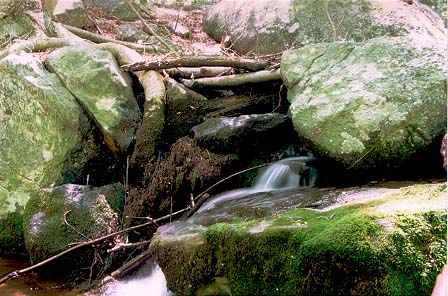

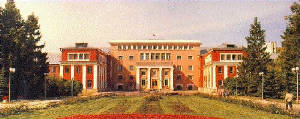
What are the ideals of today?
Human Honors.: A WebSite which reflects on the humanist and human pioneers of the past in order for the emerging idealists
of today can find their own vocies and meanings.
Student Notes : This is like a collective notebook of the various experiences, writings, and at times funny things
which has happen to Students / Scholars.
Academia: Central WabPage about the academic culture of Ithaca, New York.
The Ithaca Academic / Academia Directory - The careful selection of Universities and Colleges in a single directory
which is part of a six plan of development of the Night Lfie ( NightLife ), RMC InterCultural Communications Internet Network.
|
|
 |
|
|
|
|
The Matrix: This is the ongoing development of the innovative
Internet Matrix Democratic Culture. This involves the carefully developed combination of met tags to links, internet
network, appreciation of the operative crawlers of each search engine to the overall content on each web page being published.
The entire grid is interreated in this aspect and denote a true ethical quality which exist by the pioneers of the Internet.
There is a secret fornula for this.
Lastly: Like other successful web site programs developed
( IE. the Internationally known Night Life ( NightLife
), RMC International Internet Network )by Mr. Roger M. Christian this site will become a major attention getter
within the Internet. Never the less the massing of correct information is paramount. Also is the full envelopment
of the Internet to become an online lobbying function with links to both legislaters and their staff alike.
Mr. Roger M. Christian
Internet Master / Editor
Please get in touch to offer comments and join our mailing list for sales and specials!
You can
e-mail us at:
Science, and High Technology News:
|
NASA engineers and scientists building the James Webb Space Telescope
|
|
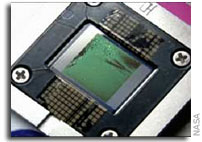
GREENBELT, Md. - NASA engineers and scientists building the James Webb Space Telescope have created a new telescope technology called "microshutters." Microshutters are tiny doorways the width of a few hairs that will allow the telescope
to view the most distant stars and galaxies humans have ever seen.
The microshutters will enable scientists to mask unwanted light from foreground objects so the telescope can
focus on the faint light of the first stars and galaxies that formed in the universe. Only the Webb Telescope has this technology.
The Webb Telescope will launch in the next decade.
In December 2006, the microshutters passed crucial environmental testing to demonstrate that they can withstand
the rigors of launching and placement in deep space. NASA's Goddard Space Flight Center, Greenbelt, Md., designed, tested
and built the instrument technology. The microshutters will work in conjunction with the telescope's Near Infrared Spectrograph
that is being built by the European Space Agency.
"To build a telescope that can peer farther than the Hubble Space Telescope can, we needed brand new technology,"
said Murzy Jhabvala, chief engineer of Goddard's Instrument Technology and Systems Division. "We've worked on this design
for more than six years, opening and closing the tiny shutters tens of thousands of times to perfect the technology."
Each of the 62,000 shutters measures 100 by 200 microns, or roughly the width of three to six human hairs. The
shutters are arranged in four identical grids that have a layout of 171 rows by 365 columns. These shutter grids are in front
of an eight million-pixel infrared detector that records the light passing through the open shutters. The detector itself
represents a technology breakthrough.
Astronomers using ground-based telescopes first take a picture of the sky and map all the objects in which they
are interested. They then create a mask resembling a sieve to place on the telescope so that only the light from areas of
interest can reach the telescope's detectors.
In space, the Webb Telescope will have a wide field of view, and its deep, long observation of the sky will
contain millions of light sources. Microshutters allow scientists to remotely and systematically block out light that they
do not want, allowing the large-format detector to measure infrared spectra optimally. Previously, masks of space telescopes
only covered large regions of a field of view at any one time.
"The microshutters provide a conduit for faint light to reach the telescope detectors with very little loss,"
said Harvey Moseley, the Microshutter Principal Investigator at Goddard. "The shutters allow us to perform spectroscopy on
up to 100 targets simultaneously. We will be able to see deeper in less time."
Each shutter grid array is etched from a single piece of silicon, leaving a sculpture of cavities and doorframes
with microscopic hinges and moving doors. The tiny shutters are laced with magnetic cobalt-iron strips.
A passing magnet will open all the doors, pulling them down into the cavity. While the doors are opened, engineers
can apply a combination of voltages to keep the selected microshutters open. The remainder close when the magnet moves away.
The microshutters must perform at a temperature of minus 388 degrees Fahrenheit (40 Kelvin, -233 degrees Celsius),
which is the temperature of the Near Infrared Spectrograph.
The microshutters are needed for observing distant, faint sources. Hubble's Ultra-Deep Field provides the deepest
view of the universe, an image containing tens of thousands of light sources. Some of these light sources are relatively close
and some are from an era just after galaxies and stars formed. To go deeper, scientists need to mask the brighter, closer
sources and focus only on the most distant. The same microshutter technology also will efficiently reveal faint features in
relatively nearby star fields, where scientists will analyze multiple sources at once.
"The microshutters are a remarkable engineering feat that will have applications both in space and on the ground,
even outside the realm of astronomy in biotechnology, medicine and communications," said Moseley.
For diagrams and images of the microshutters, visit:
http://www.nasa.gov/vision/universe/starsgalaxies/microshutters.html
|
|
|
|
|
|
|
|
T-F 10:30
|
|
Selecting Plants
|
|
|
|
M-W 11:30
|
|
Aerosols, Chemistry and Climate
|
|
Filed under:
Everyone can probably agree that the climate system is complex. Not only do the vagaries of weather patterns and ocean
currents make it hard to see climate changes, but the variability in what are often termed the Earth System components complicates
the picture enormously. These components - specifically aerosols (particulates in the air - dust, soot, sulphates, nitrates,
pollen etc.) and atmospheric chemistry (ozone, methane) - are both affected by climate and affect climate, since aerosols
and ozone can interact, absorb, reflect or scatter solar and thermal radiation. This makes for a rich research environment,
but can befuddle the unwary.
 I occasionally marvel at the amount of nonsense that is written about climate change in the more excitable parts of the web,
and most of the time, I don't bother to comment. But in relation to the issue of aerosols, chemistry and climate, I read yesterday (h/t Atmoz) probably the most boneheaded article that I have seen in ages (and that's saying a lot). I occasionally marvel at the amount of nonsense that is written about climate change in the more excitable parts of the web,
and most of the time, I don't bother to comment. But in relation to the issue of aerosols, chemistry and climate, I read yesterday (h/t Atmoz) probably the most boneheaded article that I have seen in ages (and that's saying a lot).
The hook for this piece of foolishness were two interesting articles published this week by Ruckstuhl and colleagues and a draft EPA report on the impacts of climate on air quality. First, Ruckstuhl et al found that as aerosols have decreased in Europe over the last few decades (as a result of environmental
standards legislation), the amount of solar radiation at the ground has increased while the amount reflected to space has
decreased. They hypothesize that this may have helped Europe warm faster in the last few decades than it would have otherwise
done. Or equivalently, since the aerosols are anthropogenic, that European temperatures had been subdued due to the cooling
effects of the aerosols - and since they are now decreasing, the full effects of the greenhouse gases are starting to be felt.
This is just an update to the 'global brightening' story we have touched on before. The EPA report is concerned with the impacts that climate change can have on atmospheric
chemistry, and in particular the summertime peaks in urban ground-level ozone which are a well-known and serious health hazard.
These are affected by local temperatures, cloudiness, temperature sensitive biogenic emissions and patterns of weather variability.
Again, it is a story we have discussed before.
But the NewsBusters article succeeded in getting almost every aspect of these stories wrong. How do I correct thee? Let
me count the ways.
- Aerosols are not smog:
First they confuse aerosols with photochemical smog. Both are pollutants, but the first is dominated by sulphate emissions from coal burning power plants, the second from ozone
precursors such as NOx, volatile organic compounds, and carbon monoxide mainly emitted from vehicles. (Note that ozone is
not directly emitted, but is created by chemical reactions from the precursors with the addition of a bit of photolysis -
i.e. sunlight-driven chemistry). The effects on climate are very different: ozone is a greenhouse gas, so increases cause
a warming, while sulphate aerosols are reflective, and so increases cause a cooling. The air quality issues in the EPA are
almost all focused on ozone.
- Europe is not the Globe:
The next error is to equate changes in temperatures in Europe to the globe. While it would be true that if global aerosol
levels declined it would lead to increased global warming, aerosol trends in Asia are increasing strongly, even while those
in the US and Europe are dropping. The net effect is possibly a slight drop, but the impact on global temperature is as yet unclear. This regionality matters in both the sulphates case and for ozone.
The relevant chemistry is sensitive to water vapour and temperature in varying ways as a function of the pollution level.
In remote ocean areas, surface ozone will likely decrease as the globe warms for instance (due to increasing water vapour).
In polluted environments increased temperatures and larger temperature-sensitive emissions of isoprene cause enhanced ozone
levels.
- Surface ozone is not in the stratosphere:
Next, NewsBusters asserts that the ozone story is confusing because of the
.. treaty called the Montreal Protocol. This was designed to reduce and eventually eliminate the production and release
of a number of substances thought at the time to be depleting ozone.
Ummm…. those substances (chiefly chlorofluorocarbons - CFCs) are still thought to be depleting the ozone layer
- which is in the stratosphere, some 30km above the ground-level ozone that people shouldn't be breathing. CFCs have no impact on ground-level ozone at
all (since their reactive chlorine is only released in the stratosphere).
- The final inanity:
Wouldn't it be fascinating if such efforts [such as the Montreal Protocol] lead to cleaner air around the world which ended
up warming the planet, and that additional warmth is now breaking down the very ozone we thought we could save?
Every part of this sentence is wrong. The Montreal Protocol had no impact on cleaning the air, it stopped the growth of
CFCs which are powerful greenhouse gases (in addition to their role in depleting stratospheric ozone), therefore it slowed
global warming, rather than increasing it, and we aren't trying to save ground-level ozone. Had any of this been true it would
indeed have been fascinating.
What should we make of this? Unfortunately one must conclude that no mistake is too dumb for someone, somewhere to make
if they think they can spin it into supporting their anti-science agenda. For them complexity is something to be abused rather
than a challenge to be understood, underlining quite clearly (again) the difference between science and propaganda.
|
|

Institute for the Future Announces
First Massively Multiplayer Forecasting Platform
Series of Games Tap Wisdom of Crowds to Address
Real-World Problems
The Institute for the Future (IFTF), an independent non-profit research organization, has launched a new research
platform composed of Massively Multiplayer Forecasting Games (MMFGs). MMFGs are collaborative, open-source simulations of
imagined future scenarios. Designed to address real world problems by harnessing the wisdom of crowds, IFTF's new MMFG platform
launches with multiple games this fall that invite diverse global groups of people to contribute to futures research through
games. Unlike predictions markets where answers fall within a finite range of outcomes, the Institute has created MMFGs to
gain insight into situations where the outcome is unknown.
"People are tired of feeling helpless about their future -- and there's a lot of uncertainty right now. The introduction
of this new platform for research and problem solving gives people a sense of agency and control in preparing for their future,"
said Marina Gorbis, executive director of IFTF. "As a leading force of innovation in forecasting methodologies, we realized
that creating a truly open and collaborative environment for people to imagine, plan for, and ultimately built the future
could better serve our clients and the community."
Each MMFG's backstory is defined by a unique set of "future parameters" culled from the IFTF's forecast research.
These future scenarios introduce new technologies, discoveries, and social phenomenon likely to develop in the next 10 to
25 years. Players document their personal reactions to the scenario and are asked to imagine and record how their families,
local communities, or their extended social networks might respond to the game scenarios. Encouraged to build Web sites, produce
blogs and wikis, upload podcasts and video, players will persuasively record, discuss, and debate the details of how they
imagine their own personal futures might play out within the game parameters.
In a related press release, IFTF today announced the world's first MMFG -- Superstruct ( http://www.superstructgame.org). Set in 2019, Superstruct asks players to imagine and help find solutions to five "super-threats" looming over the population
-- including global food shortages, crippling pandemics, super-hackers derailing public infrastructure, mass homelessness
and a global fuel war. Developed by IFTF researchers Jane McGonigal, Kathi Vian, and Jamais Casico, Superstruct aims to harness
the strategic thinking and creativity of its players to find plausible solutions to potential real-life problems. "Massively multiplayer forecasting games is not just a new tool for forecasting, but also a continuation of IFTF's
efforts to make forecasting more public, more inclusive, and more experiential," says Howard Rheingold, social media expert
and author of Smart Mobs. "A forecasting game is a kind of simulation, a kind of scenario, a kind of teleconference, a kind
of artifact from the future -- and more -- that enlists the participants as "first-person forecasters."
IFTF will launch three additional forecasting games this year: a game in partnership with United Cerebral Palsy
simulating a future reality of caring, a game around earthquake simulation in collaboration with the Art Center College of
Design's Design Matters program, and finally, "X2" which will convene a wide variety of distinguished participants from the
worlds of science and technology to contribute to the collective knowledge of the future.
About the Institute for the Future
The Institute for the Future (IFTF) is an independent, nonprofit research group with 40 years of forecasting
experience. IFTF focuses on identifying emerging trends and discontinuities that will transform global society and the global
marketplace. We provide insights into business strategy, design process, innovation, and social dilemmas. Our research generates
the foresight needed to create insights that lead to action. Our research spans a broad territory of deeply transformative
trends, from health and health care to technology, the workplace, and human identity. The Institute for the Future is located
in Palo Alto, CA.
SOURCE Institute for the Future http://www.superstructgame.org PALO ALTO, Calif., Sept 23, 2008 /PRNewswire via COMTEX/
|
|
Add your content here
|
The Ithaca Cultural Directory [ site ]
Ithaca Night Life ( NightLife ), NY Hometown AOL Ithaxa Night Life ( NightLife ), NY Mian Site ~.
|
|
|
 |
 I occasionally marvel at the amount of nonsense that is written about climate change in the more excitable parts of the web,
and most of the time, I don't bother to comment. But in relation to the issue of aerosols, chemistry and climate, I read yesterday (h/t Atmoz) probably the most boneheaded article that I have seen in ages (and that's saying a lot).
I occasionally marvel at the amount of nonsense that is written about climate change in the more excitable parts of the web,
and most of the time, I don't bother to comment. But in relation to the issue of aerosols, chemistry and climate, I read yesterday (h/t Atmoz) probably the most boneheaded article that I have seen in ages (and that's saying a lot). 

















